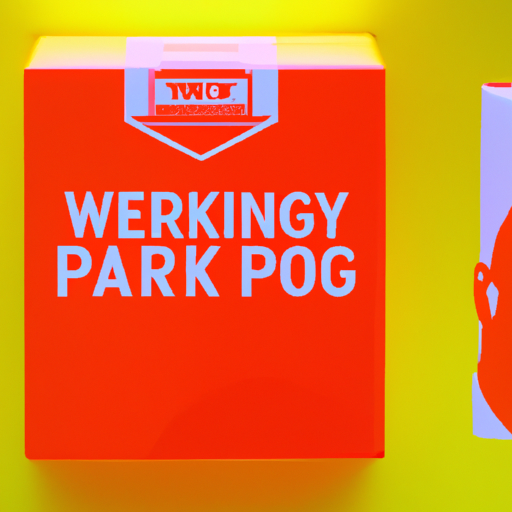-
Table of Contents
The Future of Packaging: Trends to Watch
As the world becomes more conscious of sustainability and consumer preferences continue to evolve, the packaging industry is undergoing a significant transformation. Packaging plays a crucial role in product presentation, protection, and sustainability. In this article, we will explore the emerging trends that are shaping the future of packaging and how businesses can adapt to stay ahead in this rapidly changing landscape.
1. Sustainable Packaging
One of the most significant trends in the packaging industry is the growing demand for sustainable packaging solutions. Consumers are increasingly concerned about the environmental impact of packaging waste, and they expect brands to take responsibility for reducing their carbon footprint.
According to a study by Nielsen, 73% of global consumers say they would change their consumption habits to reduce their environmental impact. This shift in consumer behavior has led to a surge in demand for eco-friendly packaging materials and practices.
Brands are now exploring various sustainable packaging options, such as:
- Biodegradable materials: Packaging made from biodegradable materials, such as plant-based plastics or compostable materials, is gaining popularity. These materials break down naturally, reducing the environmental impact.
- Recyclable packaging: Packaging that can be easily recycled and reused is becoming more common. Brands are opting for materials like cardboard, paper, and glass, which have high recycling rates.
- Minimalist design: Simplifying packaging design by using fewer materials and reducing excess packaging is another sustainable trend. This approach not only reduces waste but also lowers production costs.
For example, Loop, a global reuse platform, partners with major brands to deliver products in reusable packaging. Customers receive their products in durable containers that are collected, cleaned, and refilled, reducing single-use packaging waste.
2. Smart Packaging
The rise of technology has paved the way for smart packaging, which offers enhanced functionality and improved consumer experiences. Smart packaging incorporates sensors, RFID tags, and other technologies to provide real-time information about the product, its freshness, and usage.
Some examples of smart packaging include:
- Temperature-sensitive labels: These labels change color when exposed to specific temperatures, indicating whether the product has been stored correctly.
- NFC-enabled packaging: Near Field Communication (NFC) technology allows consumers to interact with the packaging using their smartphones. This can provide additional product information, promotions, or even personalized messages.
- Active packaging: Active packaging contains substances that actively interact with the product to extend its shelf life. For example, oxygen absorbers can help preserve the freshness of food products.
Smart packaging not only enhances the consumer experience but also helps brands track and monitor their products throughout the supply chain. This technology enables better inventory management, reduces waste, and improves product safety.
3. Personalized Packaging
In an era of personalization, consumers are seeking unique and customized experiences. Personalized packaging allows brands to create a more intimate connection with their customers by tailoring the packaging to individual preferences.
Some ways brands are implementing personalized packaging include:
- Customized designs: Brands can offer customers the option to personalize the packaging design with their names, messages, or even photos.
- Localization: Packaging can be adapted to reflect local cultures, languages, or events, creating a sense of belonging and relevance.
- Product recommendations: By analyzing customer data, brands can suggest complementary products or personalized offers on the packaging.
For instance, Coca-Cola’s “Share a Coke” campaign replaced its logo with popular names, encouraging customers to find their names or the names of loved ones on the bottles. This campaign resulted in increased sales and social media engagement.
4. Interactive Packaging
Interactive packaging goes beyond personalization by actively engaging consumers and creating memorable experiences. It leverages augmented reality (AR), QR codes, and other technologies to provide interactive content and entertainment.
Examples of interactive packaging include:
- AR experiences: Brands can use AR to bring packaging to life, allowing consumers to interact with virtual elements, play games, or access additional content.
- QR codes: QR codes on packaging can lead consumers to exclusive content, product information, or promotions.
- Product demonstrations: Packaging can include instructions or videos demonstrating how to use the product effectively.
Interactive packaging not only creates a memorable brand experience but also provides valuable data and insights into consumer behavior. Brands can track engagement, measure the effectiveness of campaigns, and gather feedback directly from consumers.
5. Intelligent Packaging
Intelligent packaging combines the benefits of smart and sustainable packaging. It focuses on reducing waste, improving product safety, and enhancing the overall consumer experience.
Some examples of intelligent packaging include:
- Active freshness indicators: Packaging that indicates the freshness of the product, helping consumers make informed decisions about consumption.
- Anti-counterfeiting measures: Intelligent packaging can incorporate security features like holograms or unique codes to prevent counterfeiting.
- Self-heating or cooling packaging: Packaging that can regulate the temperature of the product, ensuring it stays fresh during transportation or storage.
Intelligent packaging not only addresses consumer demands for sustainability and functionality but also provides brands with a competitive edge. It allows them to differentiate their products and build trust with consumers.
Summary
The future of packaging is evolving rapidly, driven by consumer demands for sustainability, functionality, and personalization. Brands that embrace these trends and adapt their packaging strategies accordingly will be well-positioned to succeed in the changing market.
Sustainable packaging is becoming increasingly important, with biodegradable materials, recyclable packaging, and minimalist design gaining traction. Smart packaging offers enhanced functionality and real-time information, while personalized packaging creates a more intimate connection with consumers. Interactive packaging engages consumers through AR, QR codes, and product demonstrations. Finally, intelligent packaging combines sustainability and functionality to provide a competitive edge.
By staying ahead of these trends and leveraging innovative packaging solutions, brands can not only meet consumer expectations but also drive growth and build a sustainable future.
